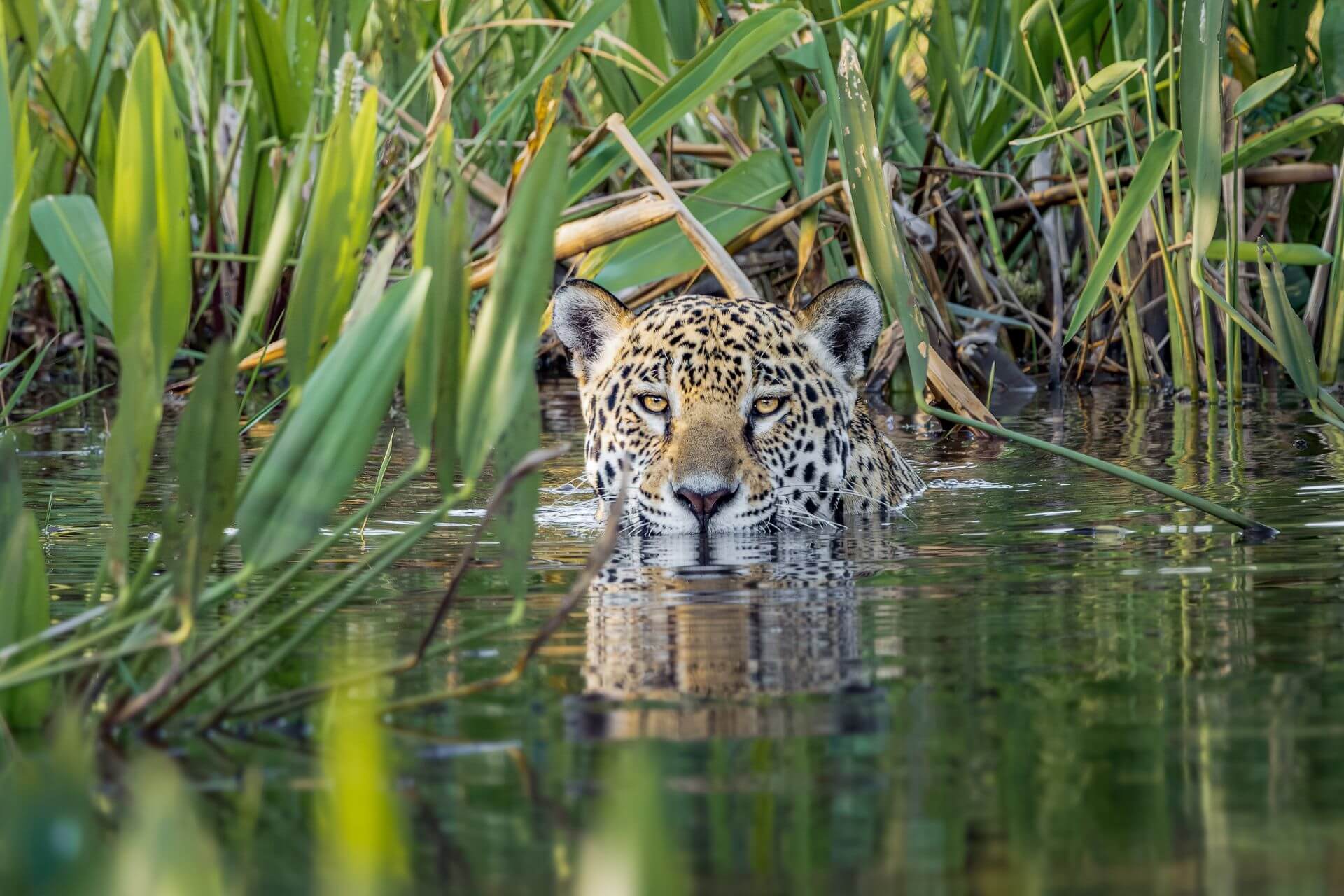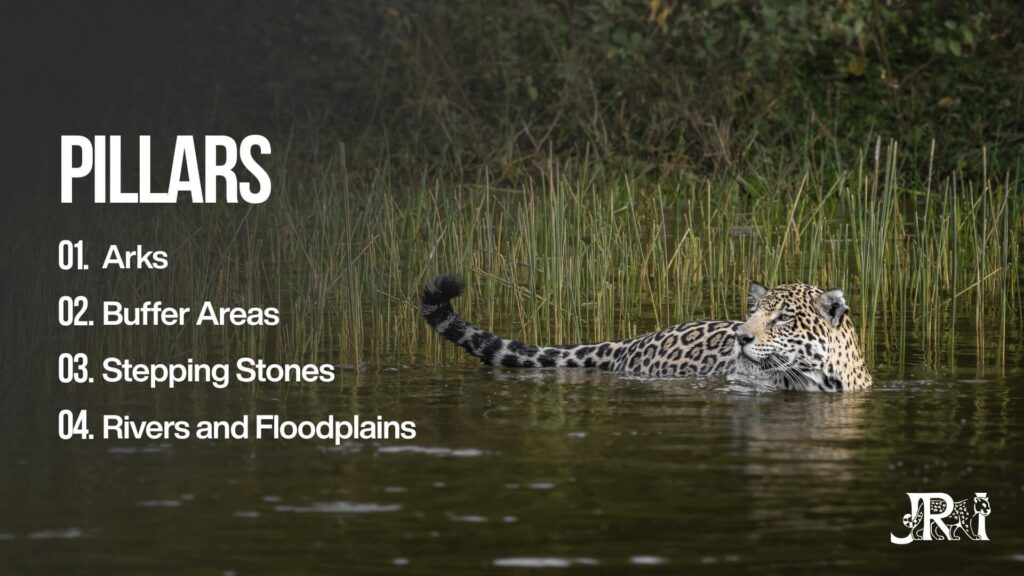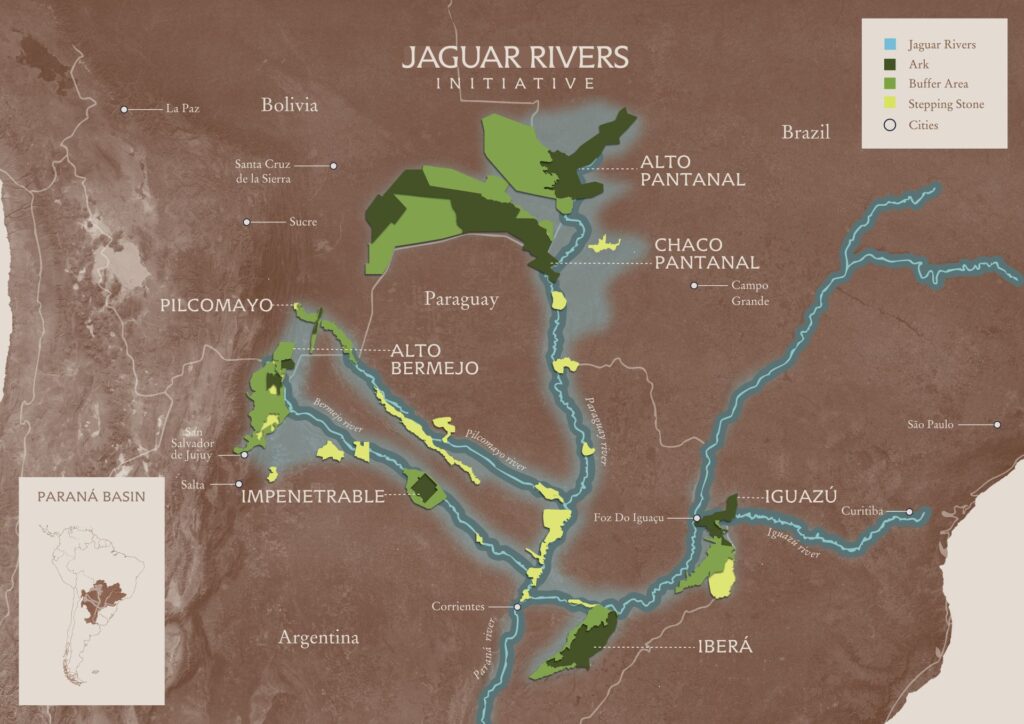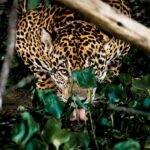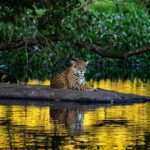The Jaguar Rivers Initiative (JRI) is an international effort that brings together Onçafari (Brazil), Rewilding Argentina, Nativa (Bolivia), and Fundación Moisés Bertoni (Paraguay) with an ambitious goal; to create a continental-scale ecological corridor connecting natural areas along the Paraná River Basin to support the restoration of South America’s ecosystems.
Spanning nearly 2.5 million km², this four-nation initiative focuses on a vast watershed that is one of the continent’s most ecologically important regions. This territory is home to a wide range of species, such as the jaguar, that rely on it for shelter, food, and natural routes between different biomes.
Each partner organization contributes decades of experience with a proven impact in its home country. In Argentina, Rewilding has led species reintroduction and ecosystem restoration efforts for 25 years protecting 1.5 million hectares and creating 11 parks in the region. In Bolivia, Nativa works to protect indigenous territories and natural areas supporting the sustainable management of nearly 10,000 hectares. In Paraguay, Fundación Moisés Bertoni promotes conservation and sustainable development, reducing water pollution and benefiting over 40,000 people.
The jaguar, a symbol of Brazil’s biodiversity, is the central figure of this initiative. More than just an endangered species, the jaguar serves as a key indicator of ecosystem health. Where the jaguar can return, it signals that forests, rivers, and wildlife can also recover, making it a powerful sign that a hopeful future is still possible.
Pillars
To make this reconnection possible, the Jaguar Rivers Initiative applies a set of territorial strategies that work as interlocking pieces of a grand ecological puzzle.
Arks are large, well-conserved natural areas that serve as main refuges for flora and fauna. These areas form the “heart” of local biodiversity where endangered species can reproduce and thrive with minimal human interference.
Buffer zones surround these core areas and act as transition spaces between pristine environments and human-altered ones. They are designated for low-impact ecological activities helping to soften the transition and reduce direct pressure on sensitive habitats.
Stepping stones are small, strategic patches of natural or recovering vegetation that act as “bridges” between habitats. These safe havens allow wildlife to disperse across landscapes and help reduce human-wildlife conflict.
But the essence of the project is most clearly seen in the rivers and floodplains. Rivers are natural pathways that connect forests, nourish plains, provide refuges, and shape wildlife routes. In the Jaguar Rivers Initiative, rivers are not just water resources; they are living corridors, conveyors of biodiversity, and symbols of the ecological restoration the project aims to achieve. Reconnection doesn’t only happen on land. It flows through water as well.
What begins today in the Paraná Basin is envisioned to expand into the Amazon and other regions of the continent connecting landscapes, recovering species, and restoring biodiversity. The goals include creating a functional ecological corridor, restoring 20 native species, reducing threats to water systems, and valuing the communities who live in these regions. If successful, this initiative could inspire a new conservation model for the entire continent led by a new generation committed to the future of biodiversity.
Onçafari: Brazil’s Representative
Through ecological corridors, Onçafari contributes its expertise in conserving Brazilian biomes, especially in its work with forest habitats. Onçafari protects properties with native or regenerating vegetation. Many of these properties are donated by philanthropists committed to environmental causes. Some of these lands are officially recognized as Private Natural Heritage Reserves (RPPNs) reinforcing a long-term conservation commitment.
Currently, the organization maintains three major ecological corridors in Brazil covering more than 2 million hectares of protected influence areas between the Amazon and the Pantanal. With the Jaguar Rivers Initiative, this work takes on a new scale, becoming part of an international effort for ecological reconnection. The on-the-ground expertise developed by Onçafari now contributes directly to enhancing connectivity across countries, transforming local actions into a cross-border conservation movement.
- Photo: Bruno Sartori
- Photo: Mario Haberfeld
- Photo: Leonardo Sartorello
- Photo: Marcos Ávila
Why the Paraná Basin?
The Paraná Basin is considered one of South America’s most strategic regions for conservation. Covering about 880,000 km² in Brazil alone, it also spans Argentina, Paraguay, Uruguay, and Bolivia. It is home to major rivers such as the Paraná, Paranaíba, Tietê, Grande, Paranapanema, and Iguaçu comprising one of the largest hydrographic networks on the continent.
Beyond its hydrological and socioeconomic importance, the Paraná Basin is a true biodiversity hotspot. It includes remnants of the Atlantic Forest, Cerrado, and other unique ecosystems, many of which are severely fragmented but still critical for species survival.
While Brazil holds around 15–20% of the world’s biodiversity, making it the most biodiverse country on Earth, South America also faces some of the highest biodiversity loss rates. Yet, the continent still hosts vast, well-preserved natural areas connected by rivers and wetlands. In the Paraná Basin, deforestation from urbanization and industrialization remains relatively low, making now the ideal time to protect the region and preserve this wild, intact ecological corridor.
Jaguar Rivers Initiative in the Media
Since its launch, the Jaguar Rivers Initiative has been featured in over 10 national and international media outlets highlighting the uniqueness and relevance of its proposal. Media coverage includes Paris Match, Folha de S.Paulo, BBC Brasil, TV Cultura, ABC TV Paraguay, among others, reaching diverse audiences and broadening the conservation conversation on a continental scale.
This visibility reflects not just the strength of the initiative, but also the power of collaboration between neighboring countries united by a common cause. As the corridor gains momentum, new stories will continue to echo across borders.
Want to learn more?
Follow @jaguar.rivers on social media or visit the website!
Written by: Maria Julia Farias
Cover photo: Lucas Morgado

